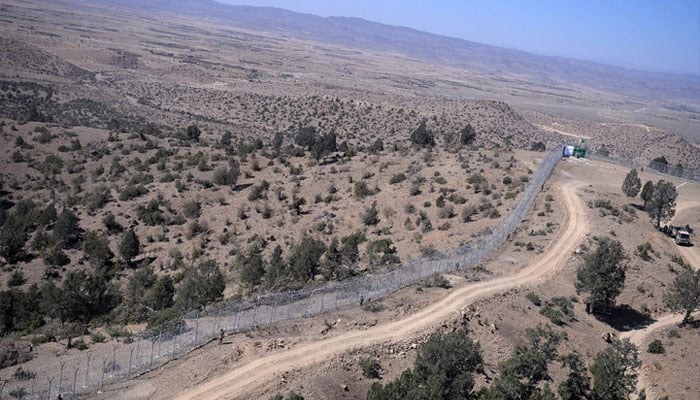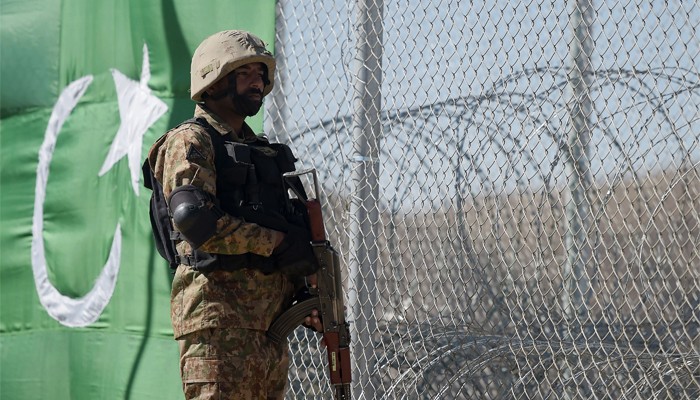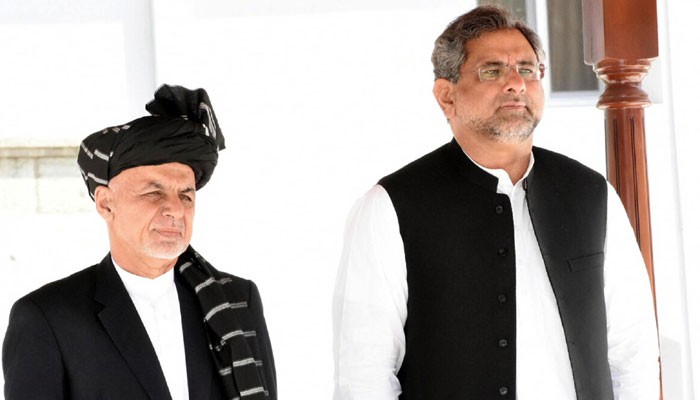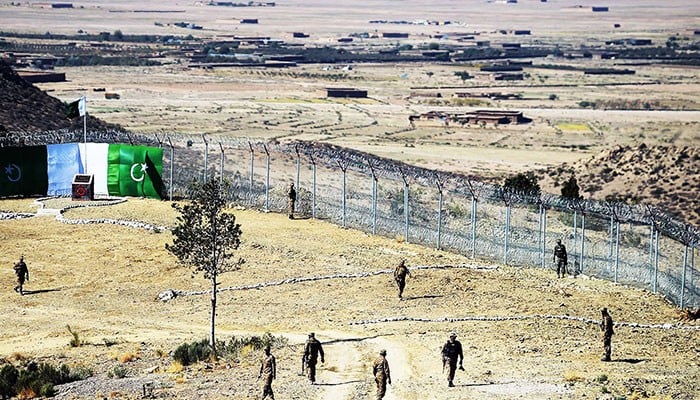The challenges of fencing the Durand Line
Pakistan has been fencing the 2,500-km border since last year as part of the new border management policy
May 01, 2018

A border clash between Afghan and Pakistani security forces on April 15 caused several casualties and highlighted the risks involved in Pakistan’s efforts to secure its borders by fencing the 2,500-kilometres-long Durand Line.
The same day the ISPR, the army’s media wing, released a statement that said soldiers from the paramilitary Frontier Corps (FC) were carrying out “routine surveillance along the Pak-Afghan border for plugging the gaps and making necessary preparations for starting fencing the area” when they were fired at from the Afghanistan side.
It said two FC soldiers were martyred and five wounded in the attack. It added that Pakistan was exercising maximum restraint. Moreover, a military engagement was under way to defuse the situation.
Indeed, the situation was defused. The firing stopped, and the Afghan authorities returned the bodies of the Pakistani soldiers. However, the incident raised more questions: why did the clash take place in the first place, especially when efforts have been made repeatedly to devise a mechanism to act in real-time to prevent such incidents?
The details about the incident that took place at the border separating Pakistan’s Kurram tribal region from Afghanistan’s southwestern Khost province aren’t fully available. As usual, Islamabad and Kabul gave conflicting accounts of the incident and the casualty figures. Islamabad insisted its soldiers were operating within Pakistan’s territory and were fired at. Kabul alleged the Pakistani soldiers intruded into Afghanistan despite warnings.
There was also discrepancy in the casualty figures provided by the two sides. Pakistan said two of its soldiers lost their lives and five sustained injuries. Afghanistan mentioned higher casualties suffered by the Pakistanis and downplayed its own losses. Sajid Hussain Turi, a lawmaker from Kurram Agency in Pakistan’s Federally Administered Tribal Areas (Fata), told the media that bodies of five FC security personnel and a captured soldier were handed over by the Afghans to the Pakistani authorities at the border.
Pakistan forces have been fencing the border since last year as part of the new border management policy. Chief of Army Staff General Qamar Javed Bajwa said recently that around 500 kilometres of the border would be fenced by the end of 2018. It is a challenging task due to the harsh terrain and remoteness of the area.
The troops, with help from civilian workers, manage to fence a kilometre and a quarter of the border in a day after transporting the construction material in trucks and then on mules up the steep and narrow mountain paths. And overriding the work is the danger of firing and sniping from the Afghan side by regular troops or Pakistani militants who found refuge in Afghanistan since 2009 after fleeing the military operations in Fata, Swat and rest of the Malakand Division.
The militants have used their bases in Afghanistan to launch cross-border attacks and plan acts of terrorism in Pakistan. The issue has fuelled tension on the border as Islamabad and Kabul have accused each other of harbouring militants posing a threat to them.
Efforts to overcome the trust deficit haven’t made a headway, although two weeks before the latest border clash Prime Minister Shahid Khaqan Abbasi and President Ashraf Ghani, after their meeting in Kabul, had committed to undertake effective action against fugitives and irreconcilable elements posing a security threat to either of the two countries. They had also agreed to deny the use of their space to anyone posing threats to the other. Such agreements create hope. But then, something happens and all the good work goes to waste.
There are certain flashpoints on the Durand Line border where the dispute over demarcation has triggered clashes. A clash near Chaman in Balochistan in June 2016, during census work by Pakistani officials, caused casualties on both sides. On May 5, 2017, the Afghan and Pakistani border security forces clashed at Torkham and both sides lost soldiers. However, good sense prevails sooner rather than later and the situation isn’t allowed to get out of control.
This time around armed local tribesmen on both sides volunteered to join their security forces to defend the country’s borders. The Afghan civilians in Khost who rushed to the Pak-Afghan border to reinforce their soldiers were far less in number than the Pakistani volunteers.
Armed civilians from different tribes in Kurram Agency flocked to the border as soon as word spread that the Afghans had attacked Pakistani soldiers. Many analysts termed it as evidence that the Pashtun tribes in Fata were still loyal and ready to fight for Pakistan despite misgivings that long years of displacement and suffering have made them angry and bitter towards the state.















